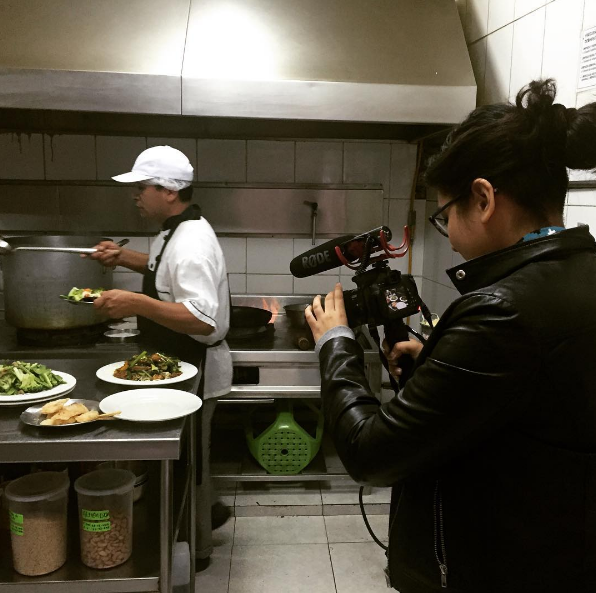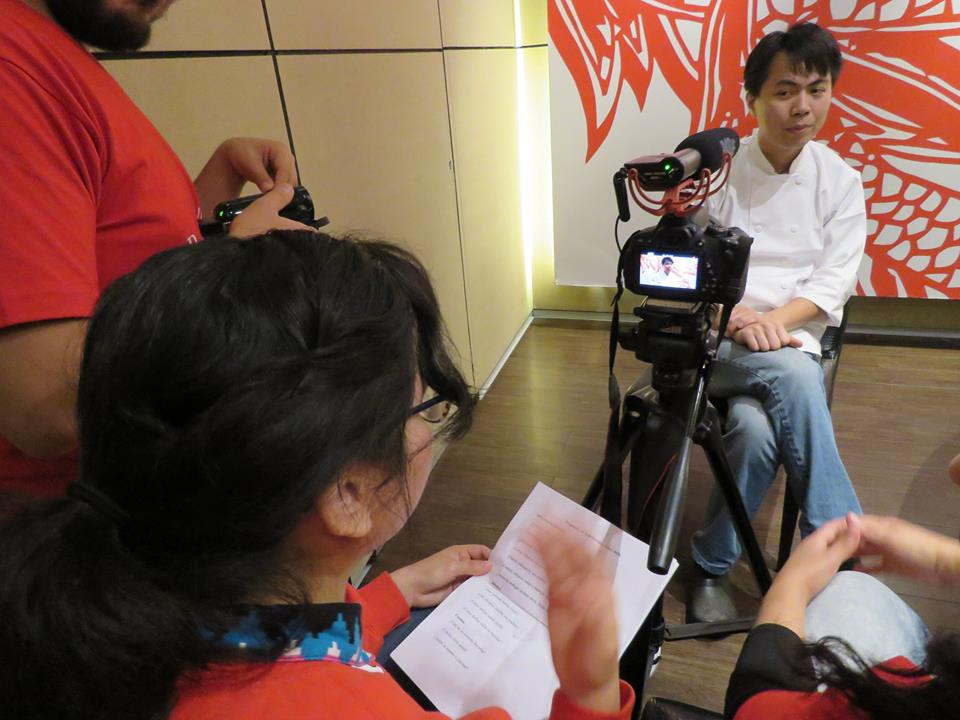The intricacy of brush strokes on a canvas or the gentle sculpting of clay mirrors the art of a chifa chef skillfully preparing a dish. Consisting of a mixture of Chinese cooking styles and ingredients with Peruvian criollo cuisine, chifa is an encapsulation of the history of Chinese immigration in Peru and a symbol of the translation of Chinese culture in Peru. As art, food, in general, represents the sum of a larger history and culture combined in an edible form. Food is an art form that brings one closer to another culture, where ingestion unifies different soils in one shared human body. It is the text of cuisine, the ingredients, recipes, menus, and languages used in its construction where one can examine society and national identity while also forming a connection to a new land.
This summer, as part of my Hanna Holborn Grey Fellowship at Bryn Mawr College,

Filming chifa cuisine being prepared.
I researched just that; the importance of Peruvian Chinese food to Peruvian national identity. In Lima, the capital of Peru, resides the central Chinatown of Peru. There, on Calle Capón, one can find many chifa restaurants, the fusion of Chinese cuisine with criollo gastronomy. Peru is actually home to the largest ethnically Chinese community in South America. Chifa restaurants are on every street in Peru and the importance of global trade with China is reflected in the vast amounts of Chinese products sold from companies such as Huawei, which even sponsors a major Peruvian soccer team. Chinese medical practices also penetrate the Peruvian household as much as Peruvianized Cantonese is spoken to order pork buns, or min pao.
My research in Peru ultimately led to me film interviews with chifa chefs and restaurant owners to create, and hopefully finish by the end of the school year, a documentary on the importance of chifa cuisine in Peru. I ended up interviewing one chifa chef, two restaurant owners, and the Director of Asian Studies at the prestigious Universidad Catolica in Peru. Each spoke about their own experience with chifa and the memories they evoked. With each interview, I learned much about the personal impact of chifa food, a

Interviewing a prominent chifa chef.
cultural and gastronomic signifier that ties to the history of those that created the food. Being invited into their restaurant kitchens to film the creation of delicious chifa dishes, I left every interview with a reinvigorated and re-inspired take on the food that I consume and how it influences my identity today.
When you think about the grand scheme of life, as Americans, we tend to take food for granted. We make eating meals a chore, hence the creation of fast food; an anti-social and speedy way to eat something, anything. We see dinning at a table as counterproductive and ultimately end up eating whatever is quick and cheap. We tend to see food as a time-consuming necessity rather than an enjoyable, pleasurable moment.
So, why exactly is food important? Food creates community, family, and society. When gathered around a dinner table, the process of eating, our interactions with each other, and the food all connect us together. In Wayanad, located in southern India, Profugo field staff work with local farmers to ensure sustainable and organic agriculture. With the farmed produce, the people join in shared meals to form a strong community. Profugo team members become part of the community of Wayanad when they join in on the ceremony of eating together. Through a shared meal, the ingestion of a common country, people unite. Whether it is the shared creation of a meal of chifa in Peru or the unified farming of dinner in Wayanad, dining together unites differing communities under the consumption of foods grown from a common soil.
To support Profugo’s community program in Sustainable Agriculture, donate here.

Leave a Reply
You must be logged in to post a comment.